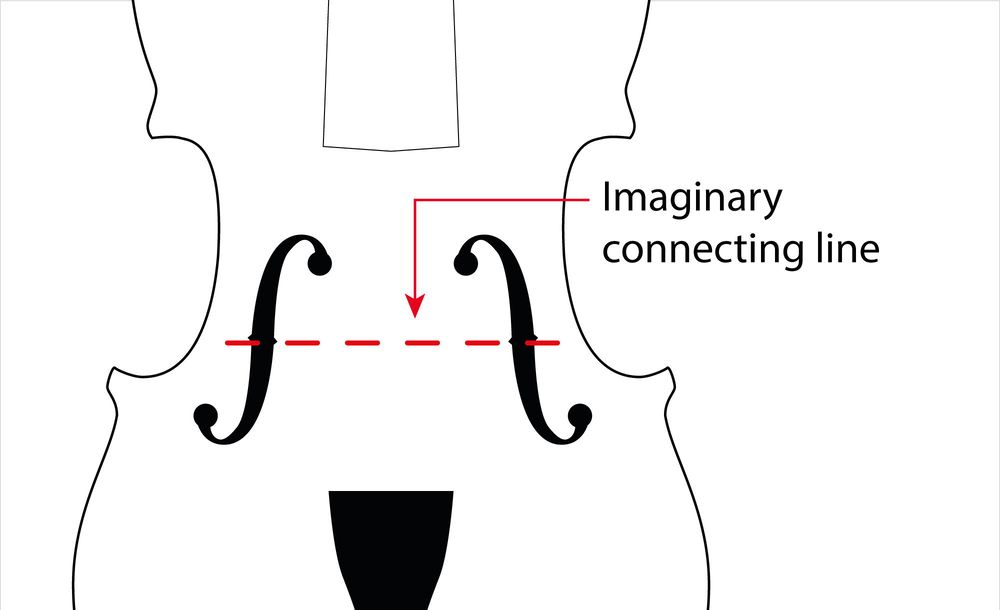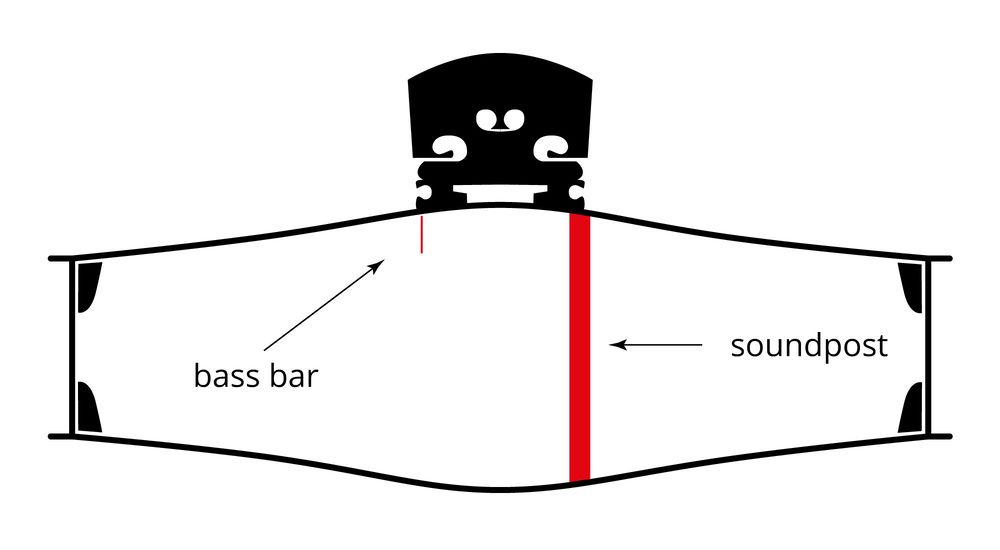8. Playability Adjustment
We're often asked whether our basses are delivered "play-ready" or if one needs to take the instrument to a bass maker.
The answer is simple!
All our basses are delivered play-ready, and you don't need to visit a bass maker.
We set up your bass directly for the desired musical style, distinguishing between classical, jazz-oriented, and rock 'n' roll string heights. Upon request, we'll string your bass with the optimal strings for your chosen style. As an additional charge, you'll pay the price for the corresponding set of strings as offered on our website and a service fee of 25EUR.
Position of the Bridge
One of the most important components of a string instrument is the bridge, over which the strings run towards the fingerboard. Depending on its position and adjustment, the bridge not only determines the scale length (the vibrating string length from the bridge to the nut) of the instrument but also the height at which the strings run over the fingerboard, known as the string action.
The optimal and correct position of the bridge can be found by first examining the F-holes of the bass.
If you imagine a line connecting the inner F-hole notches, you'll get a straight line where the bridge should stand. Ideally, the distance from the right bridge foot to the right inner notch should be equal to the distance from the left bridge foot to the left inner notch.
However, in practice, a balanced and symmetrical string alignment on the fingerboard is more important than the exact same distance of the bridge feet to the inner notches.
The height of the bridge and the upper radius then determine its suitability for a particular style. For example, a strong radius combined with a medium height is well-suited for classical bowing, while a flat radius with a low height supports good and comfortable playability in jazz (especially in the upper positions).
Adjustable Endpin
Adjustable endpins are among the things that significantly simplify the life of a bassist. It's standard and normally included with all basses. It serves to individually adjust the playing height of the instrument to the player's height. Usually, the endpin is extended so that the top of the bass's nut is approximately at the player's forehead height. However, exceptions also confirm the rule as always :-)
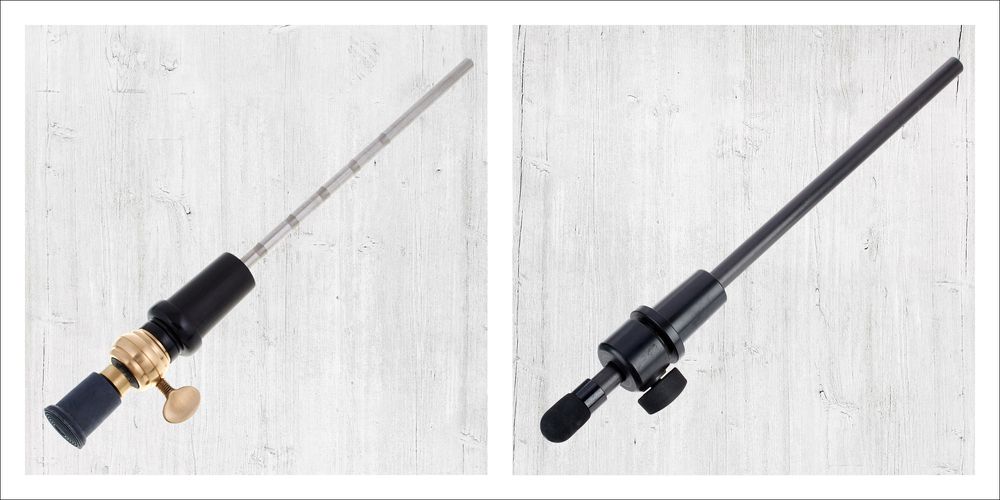
Adjustable Endpin
Adjustable Bridges
The adjustable bridge is a boon for those who have to handle a gig at a jazz club tonight and support the string section in the classical orchestra tomorrow or slap in a rockabilly band. Assuming you've strung up the bass with appropriately versatile strings, adjusting the string action to fit the stylistic playing requirements is now effortless.
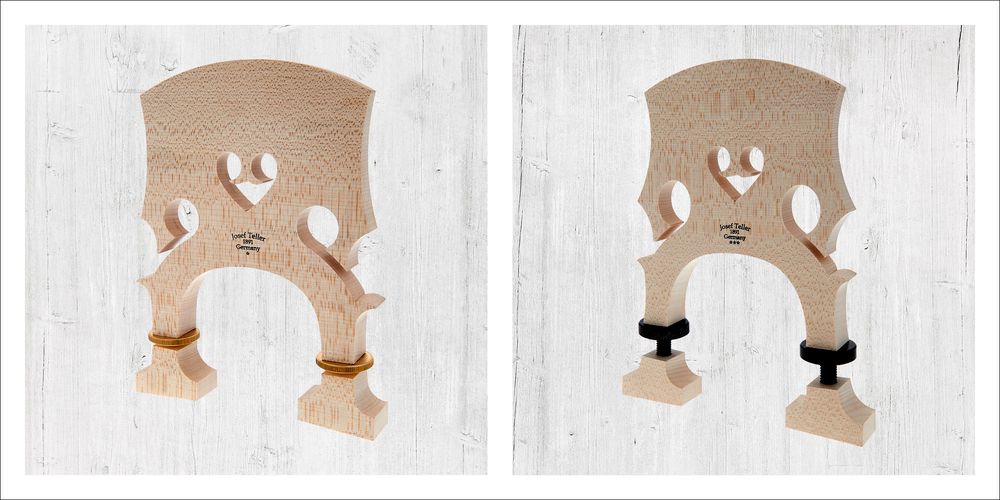
Adjustable Bridges
However, it should be mentioned that the height-adjustable screws built into the bridge can indeed affect the acoustic sound of the instrument, as the sound transmission through the bridge is altered by brass or aluminum.
In any case, it's advisable not to try to install these height-adjustable screws by yourself. A good deal of experience and a solid drill press are indispensable here! Nevertheless, there are various conversion kits available to equip the regular bridge accordingly:
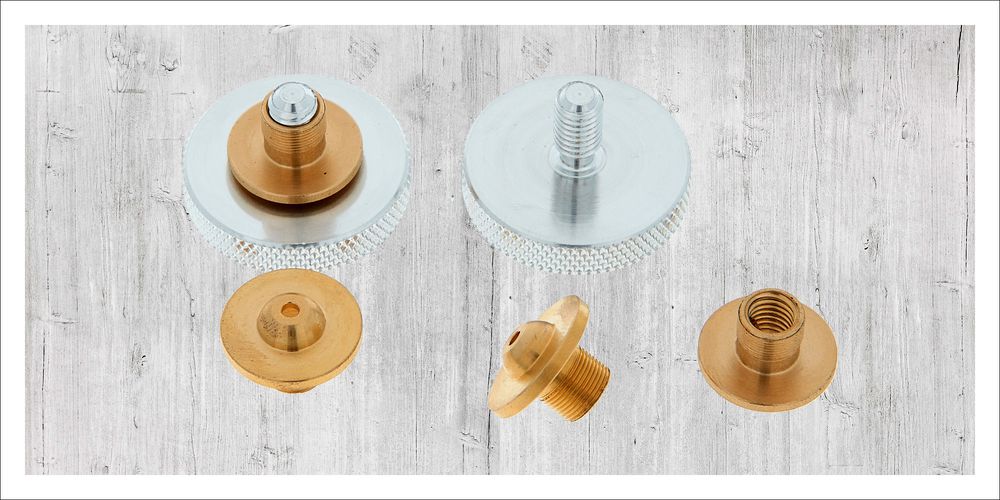
Conversion Kit
The Soundpost
Inside the instrument is a round wooden rod that connects the top and bottom. This soundpost, also known as the "soul" or "heart" of the bass, is not centrally located in the instrument but directly behind the bridge foot, which is under the thinnest string (G-string) of the instrument. When standing directly in front of your instrument, you can best see it through the right F-hole.
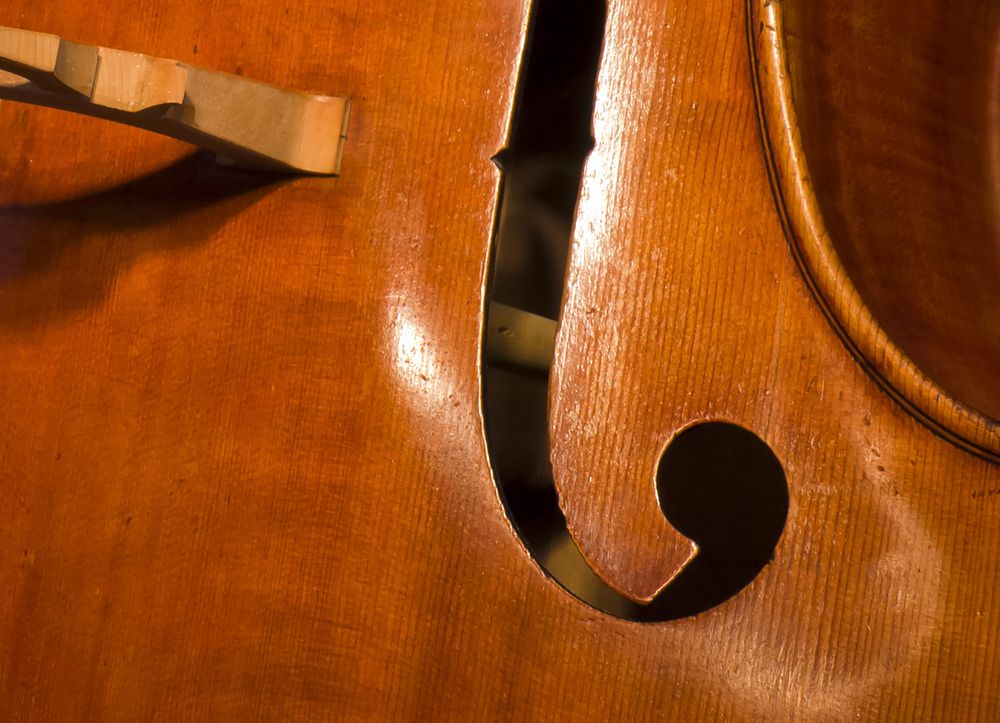
Soundpost
The soundpost is not called the soul of the instrument for nothing. Its positioning determines the sound character of the bass, or in other words, moving the soundpost also changes the sound of the instrument.
The soundpost is precisely cut and adapted to the curvature of the top and bottom. It is clamped between the top and bottom, meaning it is not glued or nailed and only held by pressure...
When changing the strings, it's advisable to remove and replace one string at a time so that the tension on the top doesn't suddenly decrease, which can cause the soundpost to fall inside the instrument.
If the soundpost still falls over, the only solution is to immediately loosen the strings. Since the soundpost inside the instrument also has the stabilizing function of counteracting the pressure of the strings and the bridge, there is a risk of top cracks, especially with solid and semi-solid basses.
The soundpost can only be reset with the help of a special tool called a soundpost setter.
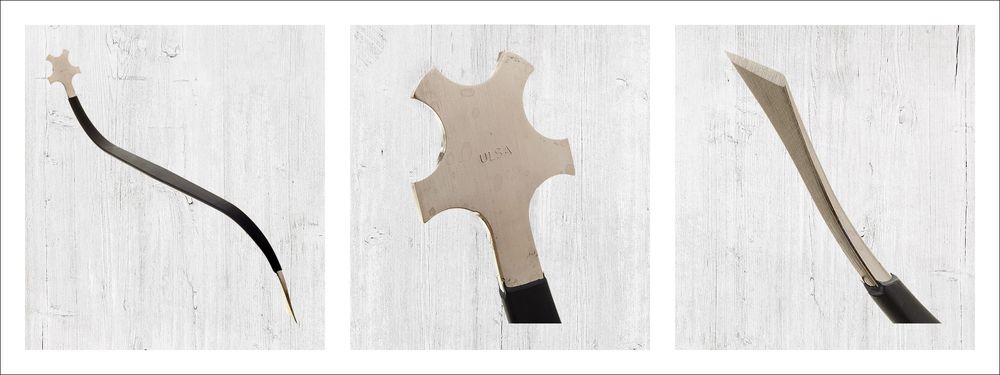
Soundpost Setter


